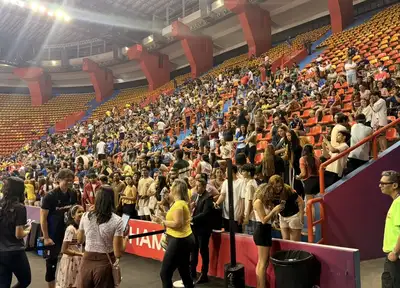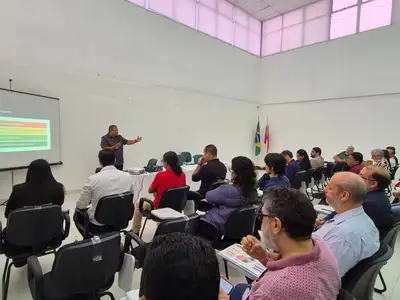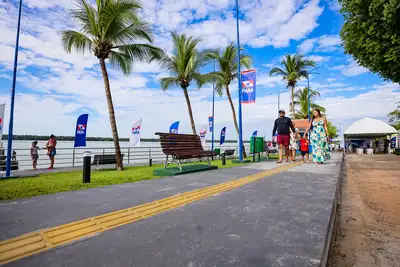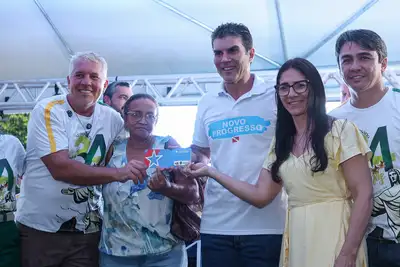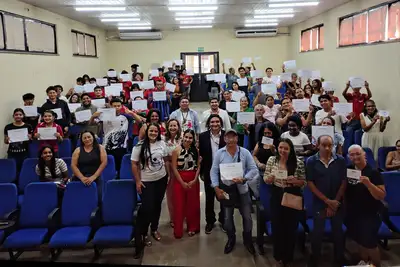Protagonists, full-time state school students launch book about school experiences
Students from the Celso Rodrigues Full-Time State School in Santo Antônio do Tauá wrote chronicles, poems, and illustrated the book 'Between Whispers and Laughter: Fragments of a School Life'
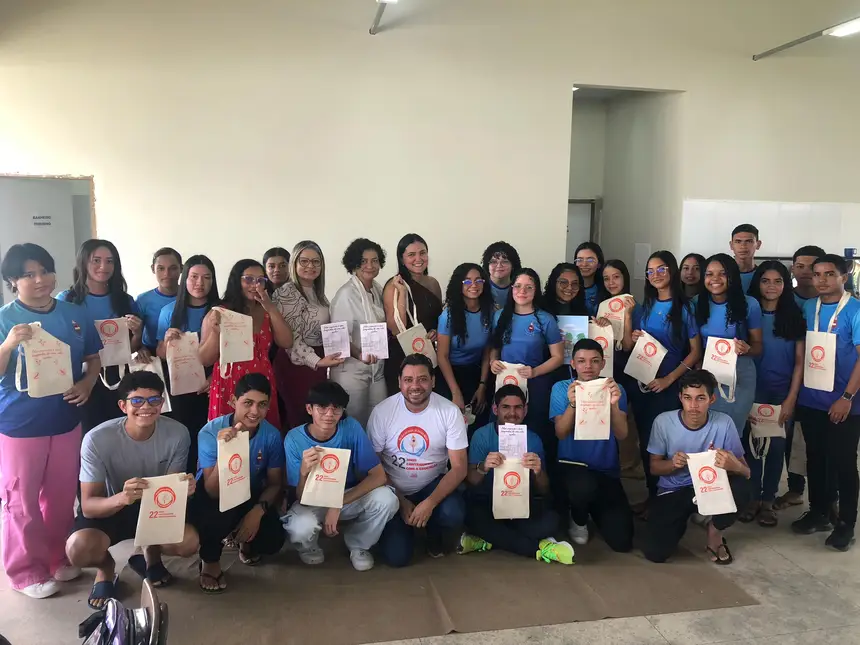
The Celso Rodrigues Full-Time State School in Santo Antônio do Tauá, in the Guamá Integration Region, was the stage for a unique moment, full of meaning and pride for the school community: the launch of the book "Between Whispers and Laughter: Fragments of a School Life," written and launched by students of the school unit last Friday (25). The work, composed of chronicles and poems, is a direct result of the creativity and effort of the students themselves and consolidates a pedagogical project that united literature, visual arts, and student protagonism.
The project emerged during Portuguese Language classes and was idealized by teachers Danúzia Marjorye and Eliana Araújo. According to the coordinators of the initiative, the idea was to encourage student protagonism and make them explore writing as a form of expression and record of their school experiences. The initiative gained momentum and received essential support from the school's management, which embraced the proposal.
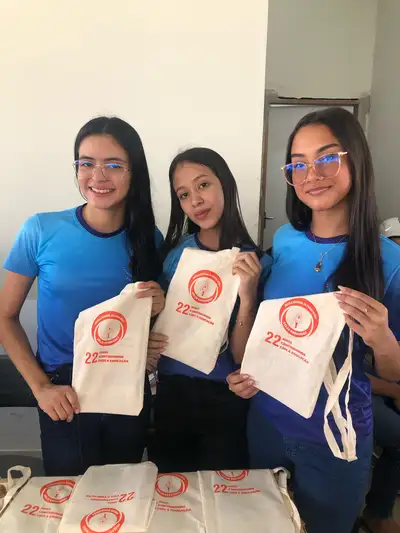
“The Celso Rodrigues School experienced a very special moment. The launch of a book of chronicles and poems produced by the students during Portuguese Language classes. A project embraced by the school's management that was developed throughout 2024 and culminated in the launch of the book, fully formatted, ready to go to bookstores. The student authors whose texts were selected signed the books, and it was a very special morning; I believe they will carry this memory and have a very beautiful remembrance of the school, not only of the texts they produced but of this launch day,” said teacher Eliana Araújo.
According to her, the initiative is of utmost importance for the development of students, and new editions of the project are already being considered. “The students were able to understand the importance of participating in classes, the importance of carrying out writing activities, and how transformative this is for their lives. They could feel firsthand how good it is to study and learned that this can bring very, very positive results. And, for sure, the new students at the school will carry this memory and will want to have their texts published in the second edition of the book, which, God willing, will still be launched in 2025,” commented the educator.
The work was not limited to textual production and also included a crucial artistic component with the support and guidance of the Art teacher, Kelso Palheta, who worked together with the students in creating drawings that illustrate the book. There was even an internal contest to select the art for the cover, which further stimulated the participation of the school community and revealed talents. The illustrations in the book, just like the texts, are entirely authored by the students.
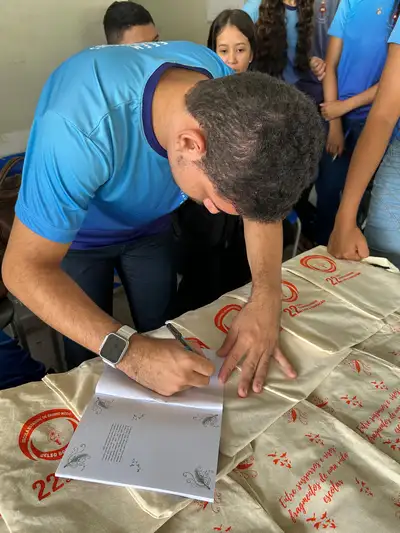
For 2nd-year high school student Eduardo Pinheiro, the project was an excellent motivator. “As always, this was a great initiative from the school that, like others, such as the literary picnic, brought an incentive to focus on writing. However, unlike the picnic, which aimed to encourage students to read, the book project came to encourage us to produce our own literature, based on the school. But, to avoid a total focus on the school, to prevent it from being too generic, the teachers involved in the project gave several ideas on how this could be done, such as sharing experiences at school. And I can say that this really worked out well because I was reading the chronicles and poems in the book and found them very interesting; I liked it a lot; it was quite complete, with feelings, comedy, and everything. For me, it was a moment of overcoming, and I also helped with the illustrations. The whole work turned out very beautiful,” he said.
Full-time education - Full-time state schools maintain a daily workload of 9 hours and 45 hours weekly or 7 hours daily and 35 hours weekly. The full-time schedule provides more resources for student development, aiming to form autonomous, supportive, and competent individuals. Schools with a full-time schedule also guarantee students three daily meals (lunch and two snacks).
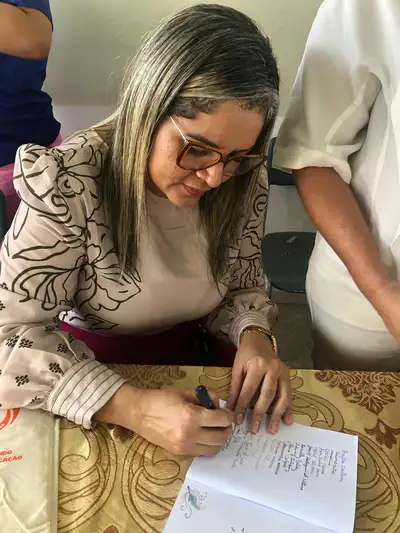
“This is a model that greatly improves the learning of new students, ensuring greater opportunities for personal development and the realization of their life projects. It is not just about having more time at school; it is about having robust pedagogical support, with thousands of projects, clubs, and other actions that enhance the teaching process. Moreover, full-time students develop stronger bonds with the school, the teaching staff, and other students, strengthening their sense of belonging and, consequently, learning more,” explained Rossieli Soares, Secretary of State for Education of Pará.
For 2025, the State Department of Education (Seduc) has established 49 more units that adopted the Full-Time Education Program (PEI), totaling 161 schools with this pedagogical model.
In addition to the increase in the number of schools, the impact of this expansion is clearly visible in the growth of enrollments. In 2018, full-time schools in Pará served 6,000 students; in 2025, there was a leap to 48,000 enrollments, an eightfold increase in capacity. A result that reflects the State's commitment to providing more opportunities for students, with access to quality full-time education.
With this expansion, Pará consolidates an education model that seeks equity and excellence, ensuring that more students have access to a comprehensive educational formation that prioritizes various areas of knowledge and human development.


